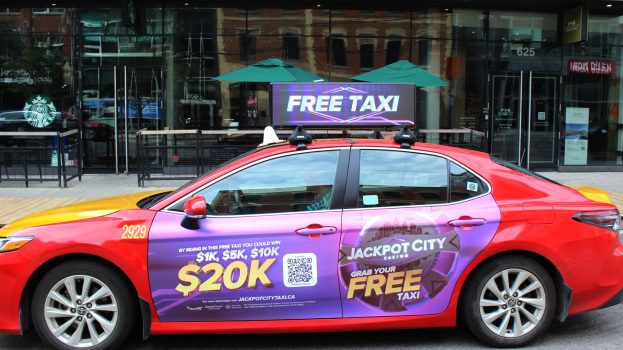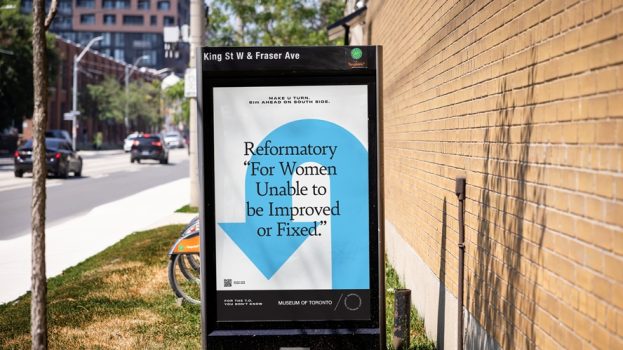A year and a half ago, SMS (shortcode messaging system) marketing was just getting underway in Canada, with marketers gingerly exploring the promise of this new channel, already much heralded in Europe.
Fast forward to 2003: Canadians are now sending 25 million text messages a month, according to the Canadian Wireless Telecommunications Association. A few key campaigns have come and gone and the first results are in. So far, everyone is a winner, but not all marketers are convinced the pros outweigh the cons.
Labatt has reason to be excited. The beer company is the first marketer in Canada to participate in a cross-carrier SMS campaign. The ‘Labatt Blue Cup Crazy’ promotion, which ran for six weeks and ended May 12, had consumers answer hockey trivia questions by sending a text message to the shortcode ’24BLUE.’ Entrants then had a chance to win a trip to the Stanley Cup playoffs.
By week five, over 1,200 people had registered at www.labattblue.ca to play the trivia game on their cell phones. While Labatt’s Kathy Murphy, manager public affairs, declines to reveal any additional numbers, she says, ‘We know that text messaging is about to break here so we’re happy with everything we’ve gotten out of this program.’
The promotion was put together by Toronto-based Impact Mobile, a mobile communications solutions provider. Gary Schwartz, president of the company, says the significant, recent development is the adoption of a uniform protocol for shortcodes and the agreement by all Canadian carriers on interoperability, meaning it is now possible for marketers to run campaigns and promotions that reach cell phone users regardless of which carrier they’re using.
‘With a common shortcode you can have a call to action based on the brand name,’ says Schwartz. ‘And that’s what’s so exciting about this. Adidas can snag ‘sport’ as a shortcode, McDonald’s can grab ‘hungry’ and it becomes a brand tag identifier and they can run promotions off it.’
Inter-carrier operability will also significantly expand the number of consumers a given marketer can reach with a single promotion. For example, Rogers AT&T has an SMS-capable subscriber base of 2.7 million. ‘But you can bump up your total another 50% or more by adding some of the other carriers. It’s like a buy – it broadens your reach,’ says John Boynton, VP consumer marketing for Toronto-based Rogers AT&T.
In January, Bell Canada, the largest cell phone carrier in the country, seized an opportunity to reach youth with a promotion featuring EMI group Coldplay. Over the course of two weeks, consumers registered on mysolo.ca (monsolo.ca in Quebec) to receive text message trivia questions about the band. Players could then reply via their phones or online for a chance to win a trip to see Coldplay in New York City.
Says Amin Rahim, associate director, youth marketing for Bell Canada, ‘We knew that Coldplay was a hit with youth and we’ve always wanted to incorporate music into our strategy.’
About 2,000 people played via their phones and the Web site (the majority via Web). Response rates to Coldplay trivia questions sent out by Bell were as high as 60%, which beat the company’s expectations of 30% to 40%. Bell also achieved quarter over quarter growth of 66% for text messaging, though that figure is attributable to all of Bell’s SMS promotions, of which Coldplay was one.
Ringtones were also offered for download and, for this initiative in particular, six Coldplay-specific tones were made available. Rahim says that during the life of the promo downloads of ringtones went up almost 20%. (Bell has over 1,400 ringtones available to consumers.)
Bell Mobility’s Solo brand is squarely aimed at an 18-to-24 demo and the Coldplay campaign worked like a charm on this score as well. Over 50% of players were under 24, and 70% were under 30. ‘We were right on target in terms of hitting our consumer,’ says Rahim.
Meanwhile, in March, Rogers AT&T partnered with Motorola for a two-hour national wireless gaming championship to raise money for Child Find. Consumers answering trivia questions via cell were eligible to win up to $6,000. In just those two hours 43,908 messages were sent and received across Canada.
There was also a mall component where Motorola provided handsets to those without a text messaging capable phone. ‘We were quite crowded in the malls. The participation levels were quite high,’ says Boynton, who declines to give specific figures.
For media partners in particular, SMS offers an opportunity to encourage interaction with viewers. Rogers AT&T ran a couple of other SMS promotions associated with TV programs which had solid results: with Pop Stars on CanWest’s Global and a similar show in Quebec called Star Académie.
In the Quebec promo, which ran in February, people text messaged in to the show to vote and SMSed the stars to have their messages read out on air. Star Académie is extremely popular in Quebec and has some three million weekly viewers, according to Boynton. ‘We were blown away not only by how popular the show was but we were blown away by the SMS usage during the show,’ says Boynton who declines to give exact numbers.
CHUM’s Citytv Vancouver was similarly pleased with the results of its SMS promotion with Bell for The Bachelorette, which ran Feb. 1-18. Viewers were encouraged to text message BreakfastTelevision and other Citytv Vancouver programs to pick the bachelorette’s final choice. People were also driven to www.citytv.com where they could register to receive news and gossip as well as text message their thoughts and observations about the channel.
Over 10,000 individual text messages were received in just over two weeks. ‘We saw a great opportunity in doing it and were amazed,’ says Steve Scarrow, promotion director for Citytv Vancouver.
Certainly, the consensus among most is that SMS marketing has now proven itself a viable, effective channel. Prepare to see a lot more of it in the months ahead. Boynton says that this summer and fall alone, Rogers will be doing one and ‘possibly two’ promotions per major category including soft drinks, music retail, beer and fast food.
‘The major brands which target youth are all under engagement or are in implementation mode,’ he says.
According to Impact’s Schwartz, in Europe in 2001 about 0% of marketing budgets were allocated to mobile. In 2002 that figure went up to 1% – and in 2003 to 7%.
And the utility of SMS marketing for instant-win in-pack and on-pack promotions has been huge in Europe and Schwartz says the same can be true in Canada. ‘In Europe, we have increased revenue on our on-pack promotions by 15-30%, average,’ he says.
But opinions differ on where the Canadian trends will go. Johanne Lemay, co-president of Montreal-based consultancy Lemay-Yates Associates, sees strong growth in mobile phone usage but is less sure marketers will spend as have their European counterparts. Lemay-Yates recently authored a 90-page report titled, ‘The Marketing of SMS and Mobile Media Services in North America 2003.’
‘It all depends on how carriers price SMS,’ she says, noting that it’s often the case in Europe that incoming calls are free. Not so in Canada. ‘So if you always pay to receive marketing messages that you don’t necessarily subscribe to, I think that’s an issue.’
On the client side, some, like Labatt, are guardedly optimistic. ‘When we’ve had a chance to look at what we’ve accomplished [with ‘Cup Crazy’] that will determine what the future plans are,’ says Labatt’s Murphy.
For his part, despite what he calls The Bachelorette promo’s success and its effectively zero cost, Citytv’s Scarrow has reservations about the future. He says no new SMS work is planned for the near term.
‘We would like to see it as a revenue generating opportunity [but] the complexity of building those promotions hasn’t allowed us to do that.’ In particular, Scarrow says co-ordinating all partners, including the channel, the carrier, and the show’s producer and distributor made for logistical headaches.
But back-end production is getting easier, says Rogers’ Boynton, because there are firms to handle the logistics. ‘Right now, there are three or four major ones. The aggregator worries about all the inter-carrier connections, about making sure it’s a seamless transition on participation.’
But adding to issues of complexity was that consumers participating in The Bachelorette promo were relatively wet behind the ears about the technology. ‘I have to admit we were cynical of the process when we started,’ says Scarrow. ‘We definitely used it as a test….Instead of just giving out a phone number or giving out an e-mail address, we felt we really had to walk people through how to text message in general.’
Youth reign in SMS world
Yep, youth are into text messaging in a big way. There’s less surprise in that observation than in the fact some of us will not yet have figured out how to get our VCRs (oh wait, DVD players – see what we mean?) beyond flashing ’12:12′ by the time tweens and teens have graduated to the next big thing. The numbers for those demos are impressive and carriers and clients alike have run most of their promos with youth in mind.
‘In the Name of Cool,’ a study by Toronto-based Solutions Research Group Consultants, finds that tweens and teens are by far in the lead when it comes to instant messaging and texting. Of the population aged 12+, tweens and teens index at 179 and 161, respectively, when it comes to interest in the texting feature (100 is the norm for all Canadians 12+). That compares to 125 for ages 20 to 29 and 94 for ages 30 to 49.
The only thing keeping the numbers for the youth demos from shooting further into the stratosphere is cost, says Michele Erskine, VP at Solutions Research Group. ‘If the marketing can give them a way of accessing mobile messaging without the worry of racking up large wireless bills, then it’s going to assist [text messaging’s growth],’ she says.
And youth – even careless, wayward youth – eventually turn into grown adults with more disposable income. Given that they’ll already be predisposed to, and comfortable with, cell phone technology, carriers like Rogers AT&T and Bell could be sitting on a goldmine.























